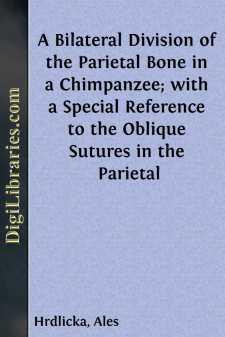Categories
- Antiques & Collectibles 13
- Architecture 36
- Art 48
- Bibles 22
- Biography & Autobiography 813
- Body, Mind & Spirit 142
- Business & Economics 28
- Children's Books 17
- Children's Fiction 14
- Computers 4
- Cooking 94
- Crafts & Hobbies 4
- Drama 346
- Education 46
- Family & Relationships 57
- Fiction 11829
- Games 19
- Gardening 17
- Health & Fitness 34
- History 1377
- House & Home 1
- Humor 147
- Juvenile Fiction 1873
- Juvenile Nonfiction 202
- Language Arts & Disciplines 88
- Law 16
- Literary Collections 686
- Literary Criticism 179
- Mathematics 13
- Medical 41
- Music 40
- Nature 179
- Non-Classifiable 1768
- Performing Arts 7
- Periodicals 1453
- Philosophy 64
- Photography 2
- Poetry 896
- Political Science 203
- Psychology 42
- Reference 154
- Religion 513
- Science 126
- Self-Help 84
- Social Science 81
- Sports & Recreation 34
- Study Aids 3
- Technology & Engineering 59
- Transportation 23
- Travel 463
- True Crime 29
A Bilateral Division of the Parietal Bone in a Chimpanzee; with a Special Reference to the Oblique Sutures in the Parietal
by: Ales Hrdlicka
Description:
Excerpt
The first to describe a case of division of the parietal bone in apes was Johannes Ranke, in 1899. The skull in question is that of an adolescent female orang, one of 245 orang crania in the Selenka collection in the Munich Anthropological Institute. The abnormal suture divides the right parietal into an upper larger and a lower smaller portion. "The suture runs nearly parallel with the sagittal suture," but, as the illustration shows (), it descends in its posterior extremity towards the temporo-parietal suture, and terminates in this a few millimetres in front of the lambdoid suture. The abnormal suture shows but little serration, and the articulation of the two divisions of the parietal bone is squamous in character, the lower portion overlapping the upper. Below the junction of the abnormal with the coronal suture, the latter takes a pronounced bend forward. A similar bend in the coronal suture is present in the same specimen on the left side. This is common among the other orang skulls in the collection. The portions of the coronal suture below and above the bend differ somewhat in character.
Besides the above-mentioned complete division, Ranke found among the 245 orang skulls 13 with incomplete division of the parietal bone. The division consisted invariably of a longer or shorter remnant of a horizontal "parietal suture," ending in the coronal suture at the top of the bend above referred to. A similar anterior remnant of an abnormal parietal suture was found by Ranke in a young chimpanzee skull; but the author questions the word "chimpanzee," which evidently means that the identity of the skull is somewhat doubtful.
In consequence of his finds, Ranke believes both complete and incomplete divisions in the parietal bone to be much more frequent in the orang than in man. He also thinks that the bend usually present in the coronal suture in the orang signifies that, "even where there are no traces of a parietal suture, such a suture has actually existed in an earlier stage of development." This implies the development of the adult parietal bone in the orang from two original segments, one above the other.
Fig. 1. Division of the Right Parietal in an Orang (Ranke, Abh. d. k. bayer. Akad. d. Wiss., II cl., XX Bd., ii Abth.).
The divisions which I am about to describe occur, one in each parietal, in the skull of a nine-year-old male chimpanzee, which was captured, when young, in West Africa. Later on he was one of the attractions of the Barnum and Bailey Circus, and was familiarly known as Chico. The chimpanzee died in 1894, since when his skin and bones have been preserved in the American Museum of Natural History, New York City. Prof. J. A. Allen, the curator of the Zoölogical Department of the Museum, has kindly given me permission to describe the skeletal parts for publication.
The most interesting part of Chico is unquestionably the skull. The divisions of the parietal bones which the specimen presents are not only the first complete divisions of the parietal observed in a chimpanzee, but are also unique in character, no divisions of the same nature having been observed before, either in man, in apes, or in monkeys. The position and extent of the divisions in this skull will throw considerable light on the question of the aberrant, complete divisions of the parietal bone, by which term may be designated divisions differing from the typical horizontal ones.
The skull under consideration shows in general a good development and an almost perfect symmetry. The capacity of the brain cavity, measured according to Flower's method, is 390 c.c.
The masculine features of this skull, and particularly the temporal ridges, are not quite as marked as those of another skull of an adolescent male chimpanzee in the Museum. The temporal ridges are slightly prominent, and in their middle third, over part of the frontal and the parietal bones, not more pronounced than in some human crania. They are, however, situated very high. Their upper lines or boundaries touch each other over a part of the sagittal suture, a little back of the bregma; while the lower lines approach to within 6 mm....


